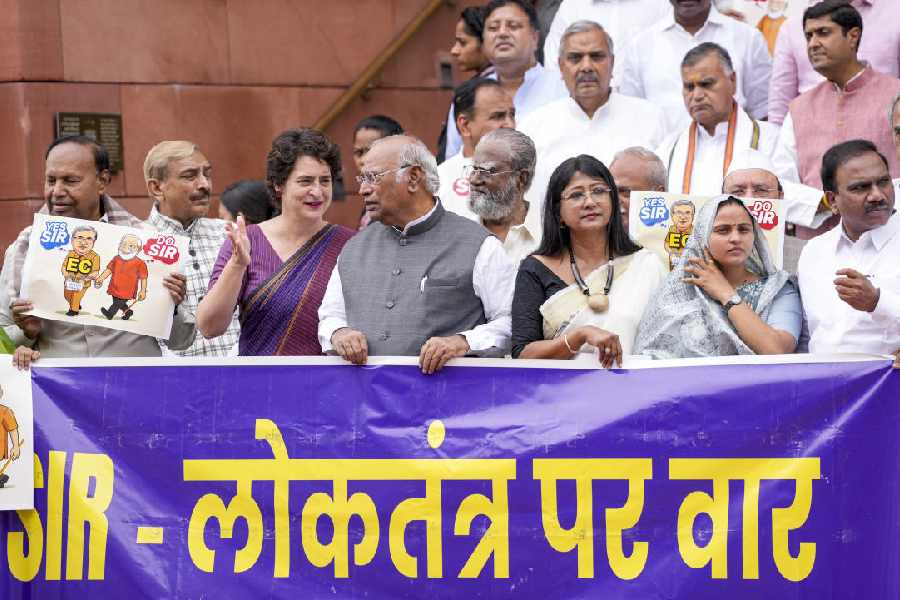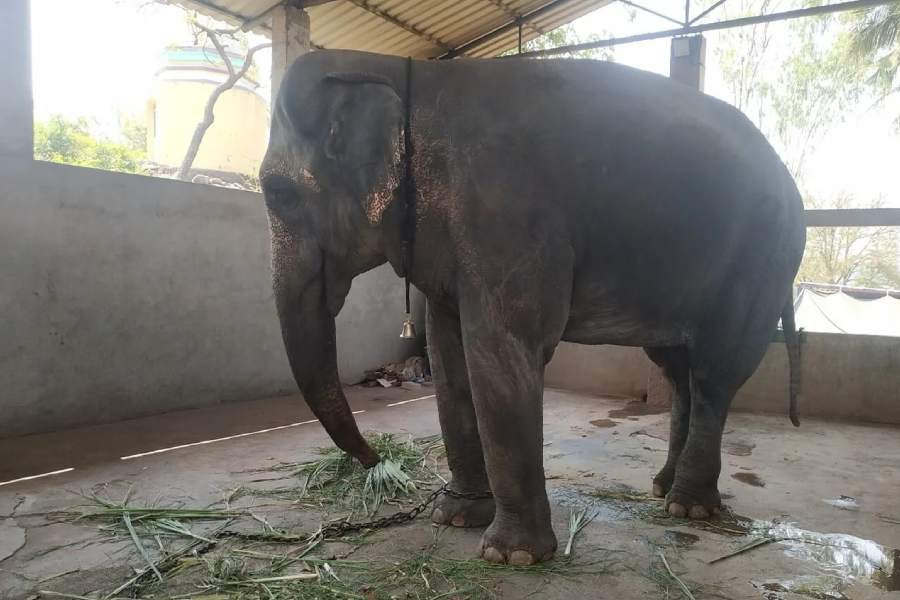 |
| Tagore uses several metaphors and allegories in his songs. He wrote for Tumi ki keboli chhobi for Kadambari Debi, but the same song is used in Shapmochon where it has scientific connotations Sushanta Dattagupta Vice-chancellor, Visva-Bharati |
Environment, agriculture, physics and almost every other aspect of science finds mention in the works of Tagore, including his songs. Sushanta Dattagupta, physicist and the vice-chancellor of Visva-Bharati, discussed the interface of science, philosophy and aesthetics in the bard’s writings at a Bengal Club Library Event presented by The Telegraph last month.
The lecture demonstration on Tagore, on Science, through Songs was interspersed with Rabindrasangeet as Dattagupta explained how music is omnipresent in all cosmic thoughts of Tagore.
As Dattagupta spoke about Tagore’s attempts to grapple with the wave-particle duality and reconcile the two apparent contradictions, strains of Alo amar alo could be heard in the background.
Remarks on Tagore’s writings in Vishwa Parichay about atoms and molecules was followed by a rendition of Bipul taranga re and electrons and the nucleus by Nrityer tale tale, Nataraj.
“Tagore wrote that there is a little hidden universe in the grand universe. If we continue to tear our mud houses, we will have dust. When objects are reduced to a state they cannot be subdivided further, we are left with crores of atoms. When atoms are ripped apart, we have subatoms. It’s like an empty Howrah station where a few wasps have been let loose,” Dattagupta said.
The physicist reminded the audience that positron was discovered in 1932 by Anderson and Tagore wrote about it the very next year in Vishwa Parichay. “This shows how Tagore was abreast of the latest scientific discoveries,” he said. Further, Tagore alluded to machines that were predecessors of the Large Hadron Collider (LHC) in Vishwa Parichay when he wrote: “Atoms can be disintegrated and there are machines that can penetrate the protons too.”
From his preface to Vishwa Parichay, where Tagore wrote that every educated person should enter the arena of science and science should be popularised through literature, to the essay Sraban Sandhya where he wrote about the intriguing relationship humans share with nature. Phul bole dhanya ami matir pore from Chandalika was sung to elucidate this.
About the origins of the universe, Tagore wrote that more than a billion years ago a gigantic star came close to the sun, superheated gas splintered into individual masses and from these burning vapour balls emerged planets such as Earth. These objects cooled off, Newton noticed the falling of an apple and thus emerged the theory of gravitational pull. The larger the object, the greater the pull. The moon is not spared either, the poet wrote, as he dwelt on gravity and electromagnetism. Akash bhora surjo tara best explains this, according to Dattagupta.
Tagore held forth on environmental sciences as well. He wrote that trees imbibe carbon to release oxygen and carbon dioxide is replenished in the atmosphere when humans exhale. Trees are central to the food chain and Tagore started the tradition of briksharopan (plantation) and halakarshan (ploughing) in Santiniketan to emphasise the importance of trees. Amra chash kori anande celebrates the ritual of halakarshan.
Another of Tagore’s songs, Kathin loha, kathin ghume chhilo achetan, o tar ghum bhangainu re is a powerful song symbolic of the sloth in humans, said Dattagupta.
Dattagupta also spoke about the genius of Tagore and his multidimensional and holistic mind. “He uses several metaphors and allegories in his songs. He wrote for Tumi ki keboli chhobi for Kadambari Debi, but the same song is used in Shapmochon where it has scientific connotations.”










